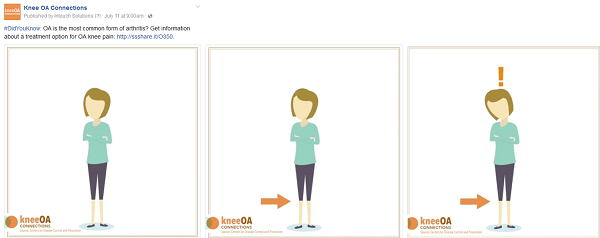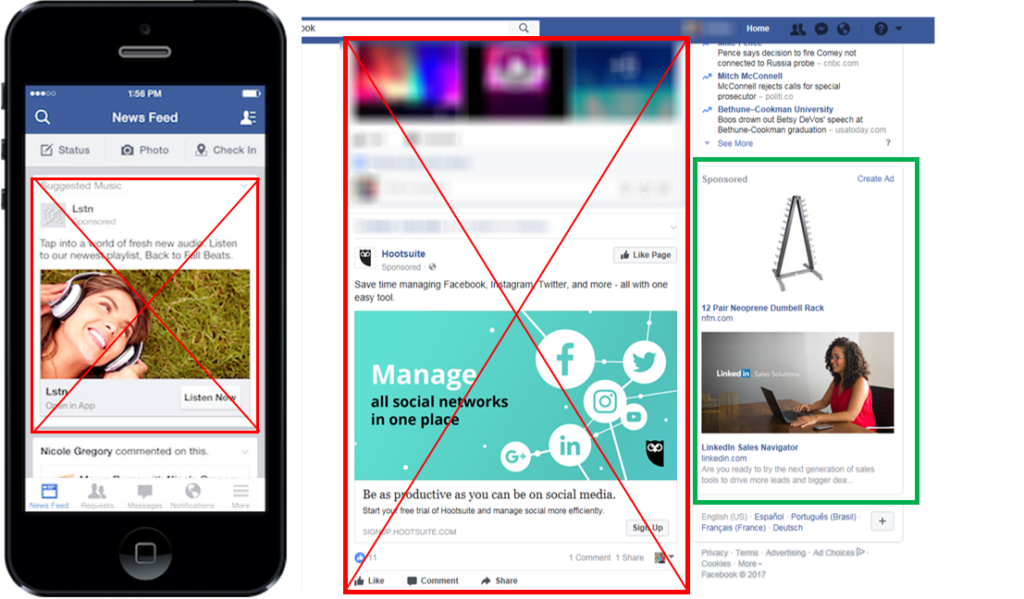EXECUTIVE SUMMARY
Social media advertising increases brand visibility, improves brand loyalty and is cost effective when compared with traditional methods of advertising. With Facebook ads for example, there are advanced targeting capabilities that allow marketers to reach 1.79 billion users. There are a variety of Facebook ad types that expand beyond just a static image. In this POV, we provide details on those ad types, including benefits and limitations.
“Followers will see less than 20% of content posted without a media spend,” – Justmedia.com
TYPES OF ADS
Lead-Generation Ads
Lead ads allow a user to submit their information straight from the ad without ever leaving the Facebook platform. The form is mobile-friendly and designed for concise answers. Keep in mind that pharma brands can’t ask medical-related questions that could imply a user’s condition, as this violates Facebook’s Attributes ads policy. Shire’s Bleeding Disorders Community was the first to implement this ad to recruit artists for a conference.

Canvas Ads
Canvas ads are essentially ‘mini landing pages’ created in Facebook that act as a website. These ads load approximately 10 times faster than mobile websites and are completely customizable. The only limitations are that these ads can’t capture leads and have limited analytics.
GIF Ads
Facebook data shows shorter videos get more complete views. GIFs are a cost-effective option to create eye-catching graphics that also act as a video. Animated GIFs auto-play in the newsfeed and grab a user’s attention. And with 5 million GIFs being exchanged on Facebook Messenger daily, it’s clear this type of graphic drives engagement.

Video Ads
Video content represents 74% of all Internet traffic. Facebook’s recent 47% surge in ad revenue is largely due to strength in video and mobile advertising. The social media giant is currently working with some of its advertisers to develop video ads as short as 6 seconds, as well as refining their video ad products.


Carousel Ads
Carousel ads showcase multiple images at a time and can drive users to additional website resources. Ads can also be used to track conversion activity (registrations). Call-to-action buttons and links can be customized along with teaser text and headlines for each section. (Image 1)
Page “Like” Ads
Page “like” ads are aimed directly at increasing the number of likes for a Facebook Page. The goal of a Facebook Like campaign is to target people who might be interested in your brand and the posts you share on Facebook. (Image 2)
Promoted Posts
Promoted posts are best used to increase reach on Timeline content posts to fans and non-fans of the Page. (Image 3)
Dark Page Posts
Unpublished paid posts (also known as dark page posts) are Facebook ads that are only visible to specific audiences, which you can define for each post. These posts will not appear on the main Timeline, so you can use specific language and content to better connect with each of your target groups. The ad will appear as a sponsored post in your target group’s News Feed. This is typically an option when a brand wants to target certain users (geotargeting, for example) on multiple occasions, but doesn’t want to necessarily clutter up their timeline with numerous posts.
Ads Without an Owned Facebook Presence
Brands do have the option of creating ads on Facebook, even if they don’t have an actual Page. This is an option for brands with smaller budgets that still want to reach a large user base on this platform. There is no need for monitoring or maintaining a profile; there is also less competition compared with newsfeed ads, and the ads will constantly appear on the screen as a user scrolls. Some limitations include the inability for brands to run page “like” ads to increase page fans; there is no presence on mobile or newsfeed, which generally produces higher click-through rates and lower costs per click; and there is less opportunity to interact with users on a social platform.

CONCLUSION
It’s no surprise that social media plays an integral part in pharma marketing. A recent PwC Health Research Institute survey showed that approximately 90% of respondents between the ages of 18 and 24 said they would trust medical information they found on social media networks. According to another study, up to 41% of patients’ decisions when choosing a specific doctor or hospital are influenced by their social media experiences.
Intouch recommends going beyond the comfort zone of static image ads and presenting a variety of ad types to clients that best align with overall brand objectives.
Feel free to reach out to your Intouch representative or media manager with any questions.

